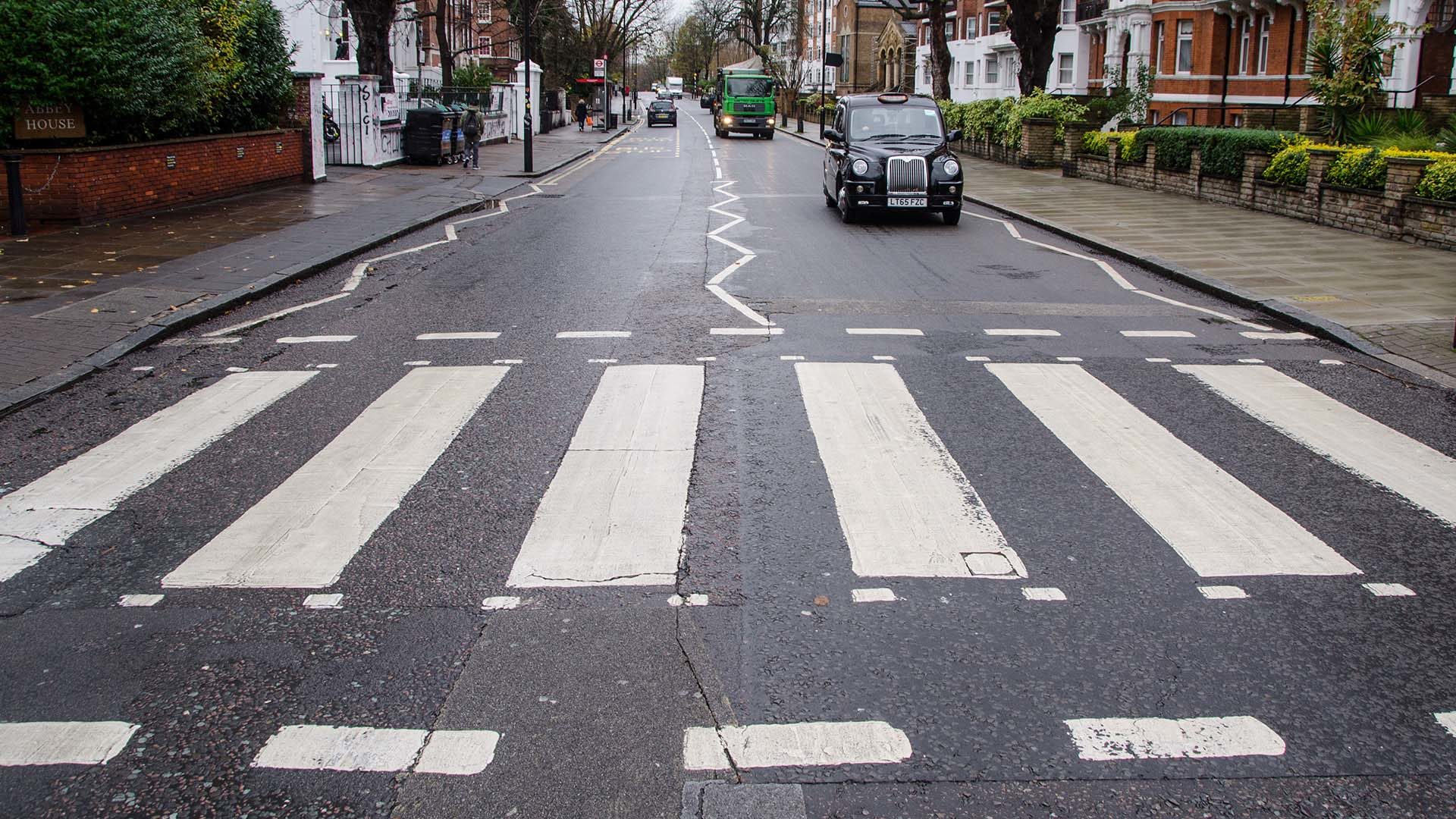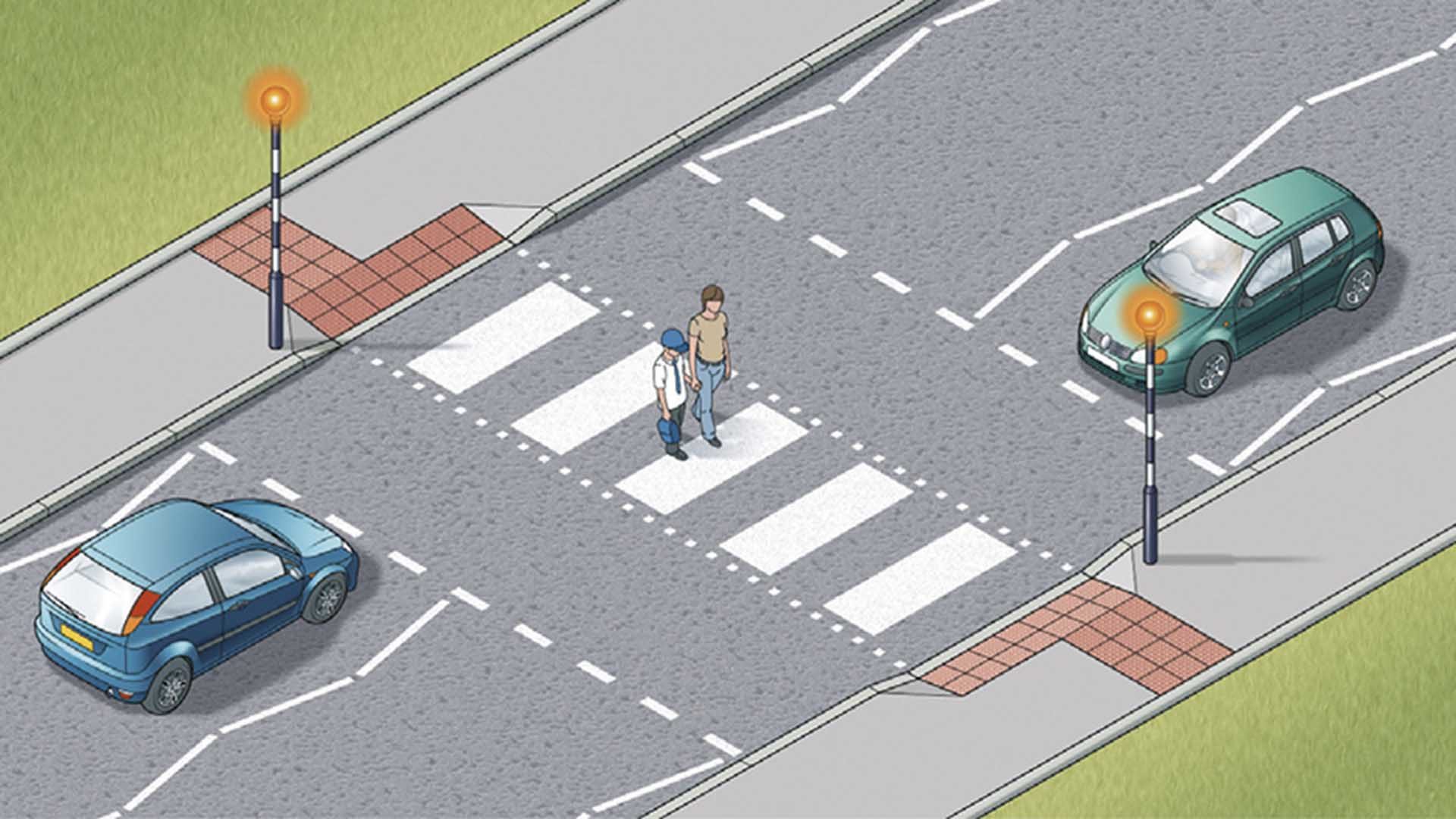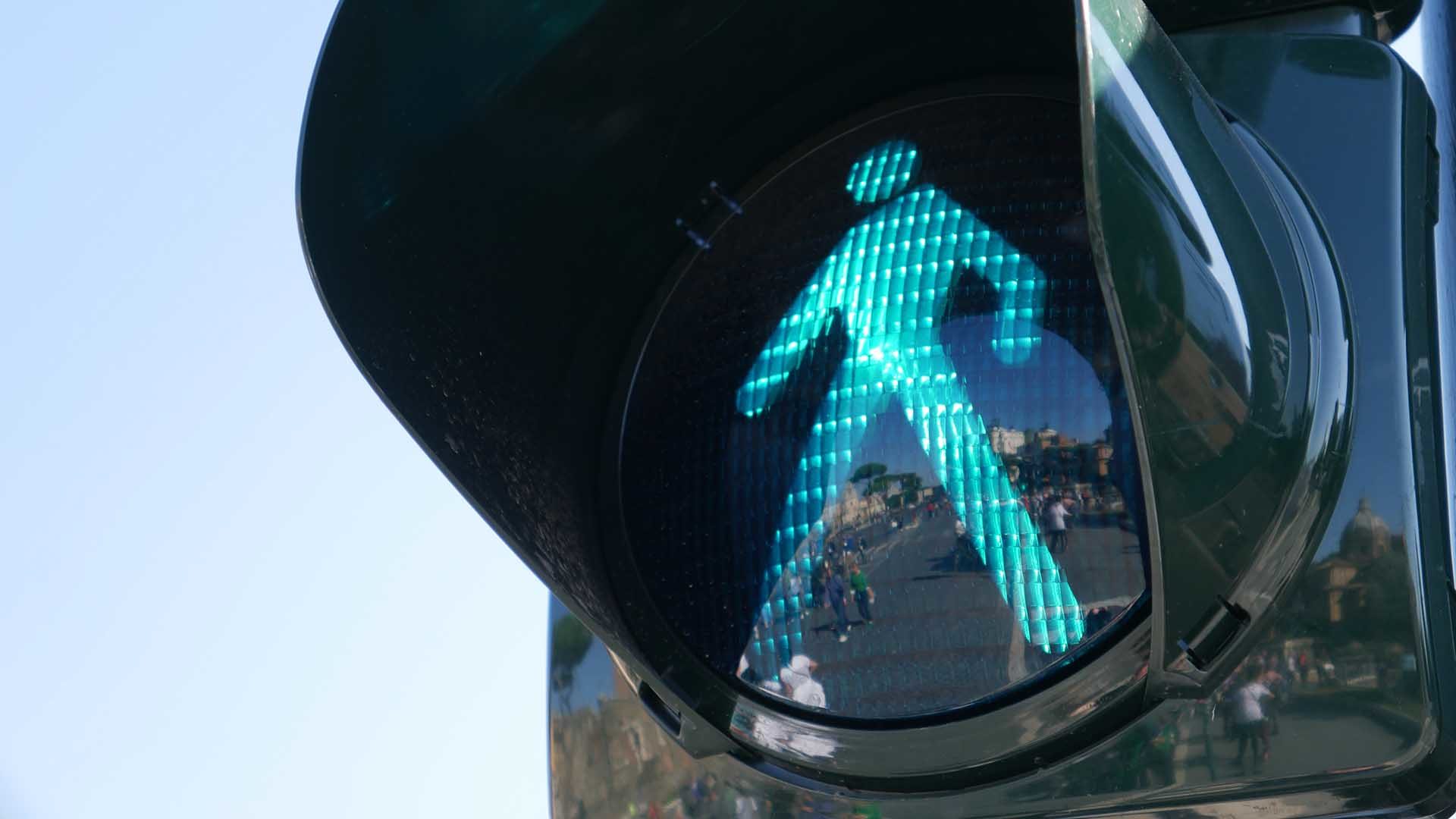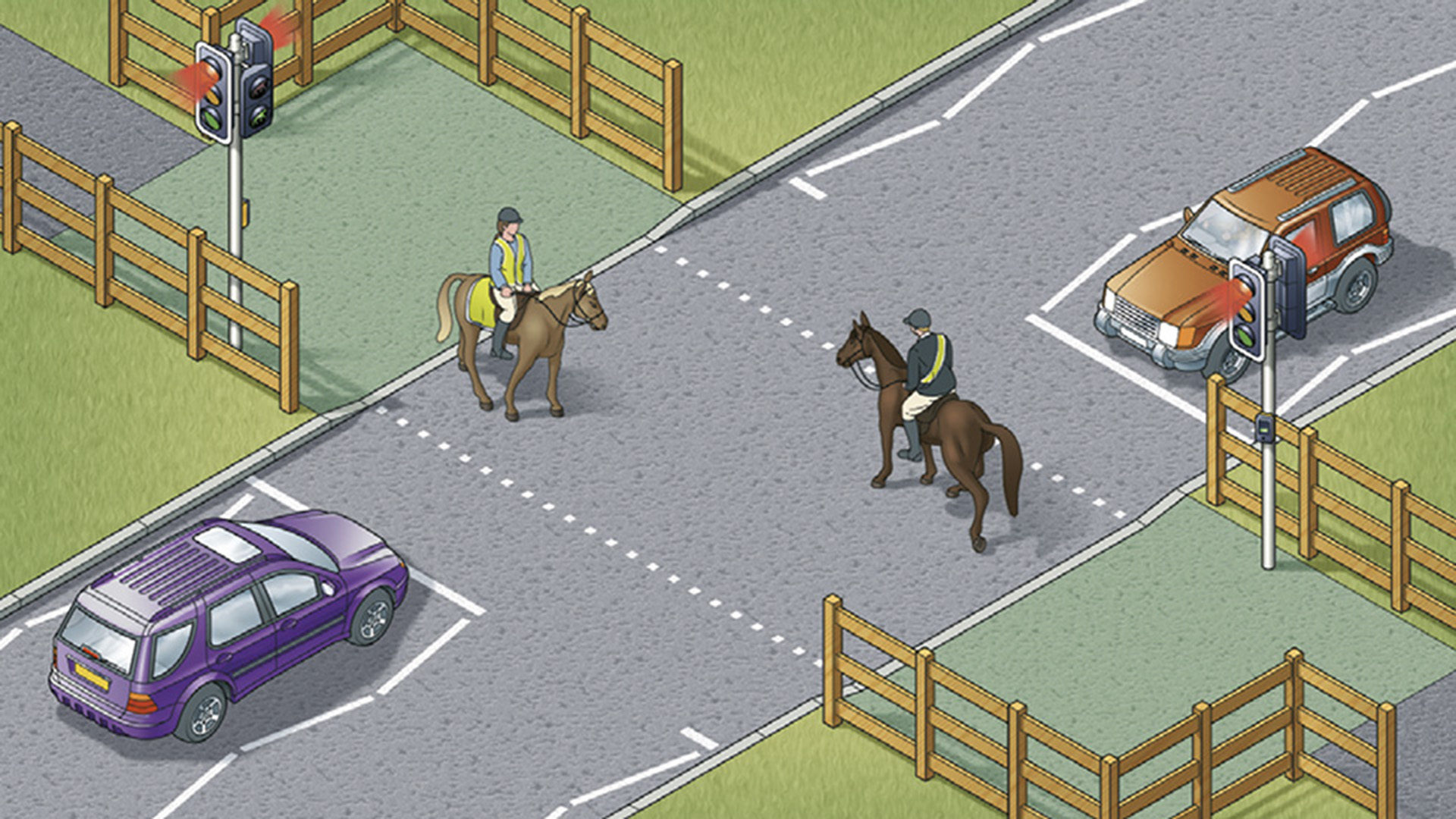
Research has shown that 81 percent of drivers don’t know how to use a zebra crossing. And as many as a quarter don’t know who is permitted to use a toucan crossing.
You might be surprised to learn there are seven types of pedestrian crossings in the UK, including the relatively new tiger crossing for both pedestrians and cyclists – officially known as a parallel crossing.
In this short guide, we explain the differences between zebra, pelican, puffin, toucan, pegasus, officer-controlled and tiger crossings. No jaywalking, please.
Zebra crossings

This is the most common form of pedestrian crossing. Zebra crossings have flashing beacons on the pavement, black and white stripes on the road and zigzag lines on either side of them. These lines prohibit drivers from parking on either side of the crossing.
Traffic does not have to stop until someone has moved onto the crossing. When there is an island in the middle of a zebra crossing, pedestrians must wait on the island before crossing the second half of the road. It is counted as a second pedestrian crossing.
Pelican crossings
These are signal-controlled crossings operated by pedestrians. Pushing the button will activate the traffic signals, but pedestrians should not cross when the red figure is illuminated. When a steady ‘green man’ shows, drivers will be shown a red light telling them to stop. If the green figure begins to flash, pedestrians should not start to cross.
Drivers must not move until the pelican crossing is free of pedestrians. A survey by Uswitch found that 71 percent of people believe pelican crossings can be used by cyclists. This isn’t the case – only pedestrians are permitted to use a pelican crossing.
Puffin crossings

Puffin crossings differ from pelican crossings as the red and green figures are above the control box on the side of the road. There is no flashing green figure phase. Simply press the button and wait for the green figure to show.
Essentially, these are smarter versions of the older pelican crossings. They use sensors to indicate when the crossing is clear to release the traffic. Only one in three people who took part in the Uswitch survey were able to identify a puffin crossing.
Toucan crossings
Toucan crossings work in the same way as pelican crossings, with the key difference being that they can be used by pedestrians and cyclists. They are push-button operated. Car drivers will see a red light when the pedestrians and cyclists are shown a green light to cross the road.
Pegasus crossings

Pegasus crossings, also known as equestrian crossings, are for horse riders. They feature pavement barriers, wide crossing spaces, plus horse and rider figures in the light panels. The button is positioned higher for ease of use by the horse riders. Traffic is controlled via standard traffic lights.
Authorised person crossings
These are crossings controlled by an authorised person, such as a school warden (traditionally a ‘lollipop lady’) or police officer. They will signal the traffic to stop, at which point the pedestrians can cross in front of the authorised person.
Tiger crossings
Tiger crossings, officially called parallel crossings, combine a pedestrian zebra crossing with a crossing for cyclists. They are often known as tiger crossings because early examples featured yellow stripes on black tarmac.
The UK’s first tiger crossing was installed was in London, but the concept is common in the Netherlands. Unlike toucan crossings, they feature dedicated lanes for pedestrians and cyclists. This makes them ideal for use on cycle lanes.
In all cases, pedestrians and cyclists must check that the traffic has stopped before they start to cross the road. Always cross between the studs or over the zebra markings, and do not loiter on a pedestrian crossing.
Click here to read the official crossings guidance in the Highway Code.
ALSO READ:
At present (5 September 2021) there appears to be no legislation published on the actual law covering Tiger pedestrian crossing, certainly nothing in the online Highway Code. A stated case years ago held that a cyclist riding across a uncontrolled pedestrian crossing was a vehicle not a vehicle. Has the law changed to give cyclists precedence using a Tiger crossing. My own council (LB of Bromley) who have put four of these crossings in (I believe for TfL) have neglected to answer an official request for the law on these crossings. Can you assist?
Islands within a Zebra crossing – the above advice is incorrect. The island splits the crossing, and each part should be treated as a separate crossing. The rule of pedestrians is advisory and is asking that they heed caution much like a single crossing. The advise is that the pedestrian should re-assess the crossing as if it were a new crossing, seeing that the traffic is far-enough away to fairly stop – but essentially it is advisory and not for the pedestrian to make the correct judgement, it is merely to help preserve their safety. Whereas in contrast, the rule for the vehicles is different, and MUST be prepared to stop. So for an island situation, the car can ignore a walking pedestrian on the other side of the road, but once the pedestrian is close to the island (approaching the cars side), the car MUST be prepared to stop. The car is not breaking any rules by not stopping and driving through, until the pedestrian has actually entered (set foot on) the crossing.
So what exactly are the crossings with no lights or beacons? They do have dropped Kerbs and cobbles or small paving that differentiates them from the road surface. The ones on wider roads may have an Island. I don’t see theme here. Are they “crossings”? Is it mandatory to give way to pedestrians. Genuinely confused. Thanks.
I’m glad I don’t live in the UK. How complicated! In the US we have pedestrian crossings- period! No need to name them after a dozen different animals either!